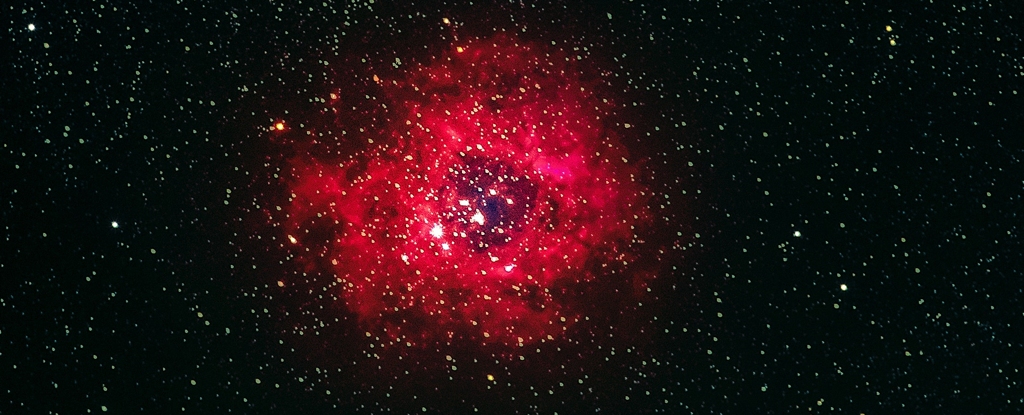
Growing attention surrounds unidentified flying objects (UFOs) since the Pentagon’s 2021 report spotlighted anomalous objects, termed unidentified aerial phenomena (UAP), in US airspace.
Fast-forwarding to 2023, NASA has established a dedicated panel to investigate these reports and has appointed a director for UAP research. The Pentagon, through a newly founded desk, released footage of mysterious metallic orbs. Former intelligence officer David Grusch, under oath before the US Congress, disclosed interviewing individuals associated with secret UFO programs.
The quest to explore the sky for extraterrestrial, physical objects intensifies, driven by the possibility of uncovering whether Earth is alone in the galaxy. With 40 billion potentially habitable planets in our Milky Way, initiatives like the Breakthrough Starshot program strive for interstellar exploration using innovative propulsion methods.
Sending a probe might be more economical than traditional communication methods. If we can send probes to other stars, could an advanced civilization send probes to our solar system? Such probes might explore the main asteroid belt or lurk on an asteroid, potentially entering Earth’s atmosphere and being labeled a “UFO.”
While some argue that such probes must adhere to our current understanding of physics and engineering, the evolution of human knowledge is ongoing. As a relatively young civilization, our comprehension of science and engineering continues to evolve.
Considering the potential longevity of an extraterrestrial civilization that has evolved into artificial intelligence (AI), the idea of strolls between stars becomes conceivable. However, the US Navy videos and government reports, though intriguing, are met with skepticism among astronomers, emphasizing the need for more substantial evidence and data.
Unveiling UFOs
Exploring the existence of extraterrestrial probes near Earth and their potential connection to UFO phenomena involves various testing approaches. One promising avenue is the analysis of materials from purportedly crashed UFOs, a process demanding state-of-the-art techniques to discern any unique manufacturing characteristics.
Securing such exotic samples, often rumored to be in the possession of private entities, poses challenges. However, a newly proposed legislation in the United States could potentially address this issue by mandating the surrender of all artificial materials from non-human intelligence to the US government.
In ongoing projects, our focus lies in the search for artificial non-human objects by detecting short light flashes in the night sky. These flashes, typically indicative of sunlight reflection on a flat, highly reflective surface, may also signify an artificial object emitting its internal light.
Repeating short light flashes following a straight line, resembling the tumbling motion of objects in orbit around Earth, are key indicators. Satellites often exhibit such repeating flashes in images. Notably, historical photographic plates predating Sputnik 1’s launch in 1957 revealed nine light sources (transients) appearing and disappearing within an hour, challenging astronomical explanations. Some instances even featured aligned transient light sources, resembling the patterns observed when short flashes emanate from moving objects.

The latest discovery in this category involves three bright stars captured in an image dated July 19, 1952, coinciding with the well-known Washington UFO flyovers. Intriguingly, these three stars mysteriously disappeared and were never observed again.
In the contemporary pursuit of alien probes in the night sky, a notable research initiative, ExoProbe, employs multiple telescopes to detect short light flashes indicative of potential alien objects.
To ensure credibility, each flash must be witnessed by at least two different telescopes, strategically positioned hundreds of kilometers apart. This spatial separation enables the measurement of parallax, the apparent shift in an object’s position observed from two distinct points, facilitating the calculation of its distance.
The ExoProbe project employs unique methods to filter out light flashes from the vast array of space debris fragments and satellites populating the sky. Incorporating a telescope for real-time spectral analysis of objects in a wide field enhances the ability to study transients before they disappear.
Increasing the number of telescopes further improves accuracy in measuring parallax, aiming to precisely determine the three-dimensional location of potential alien objects. Ultimately, the objective is to identify and study any extraterrestrial object, potentially bringing it back to Earth for further examination.
Despite six decades of searching for extraterrestrial civilizations through radio frequencies yielding no candidates, the current moment prompts the exploration of new avenues. Focusing attention closer to home, this journey is a testament to our unyielding curiosity, regardless of the outcome.
Beatriz Villarroel, Assistant Professor of Physics, Stockholm University
This article is republished from The Conversation.





